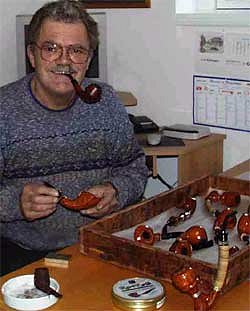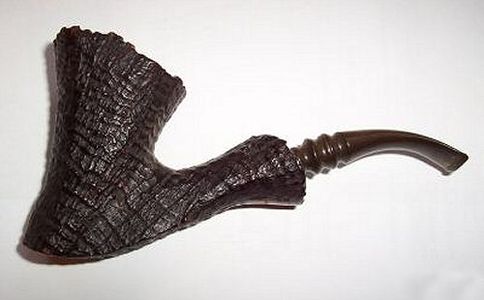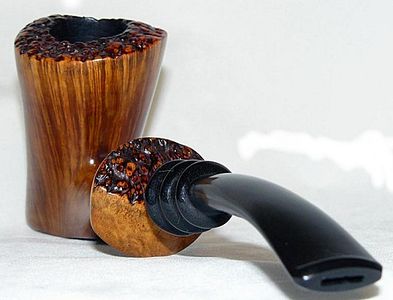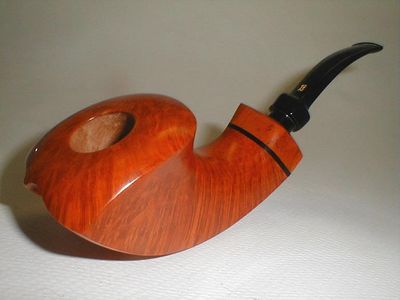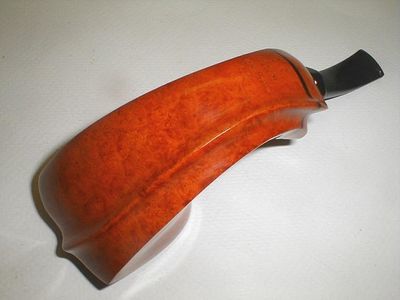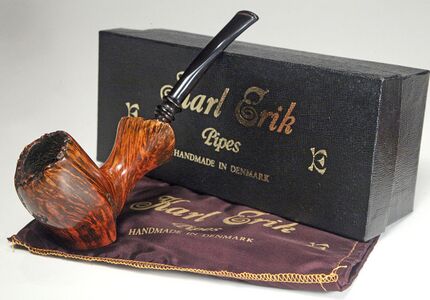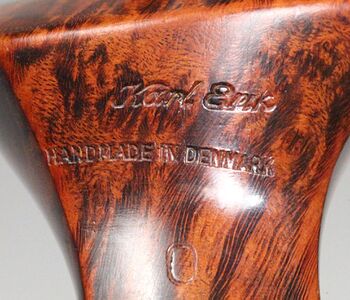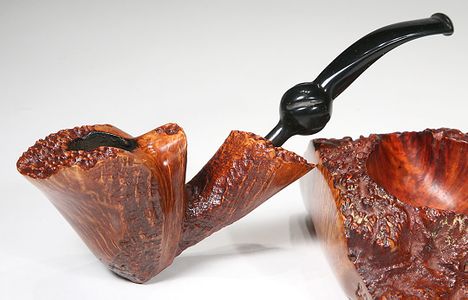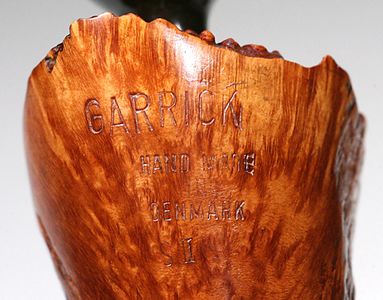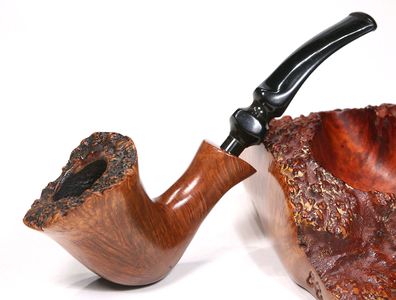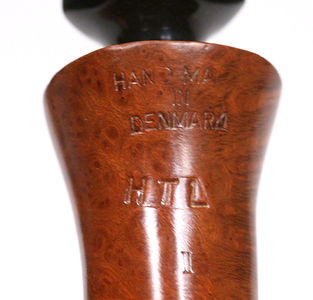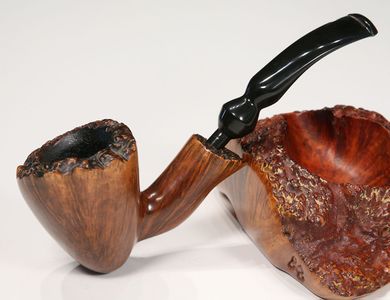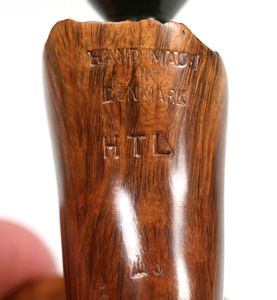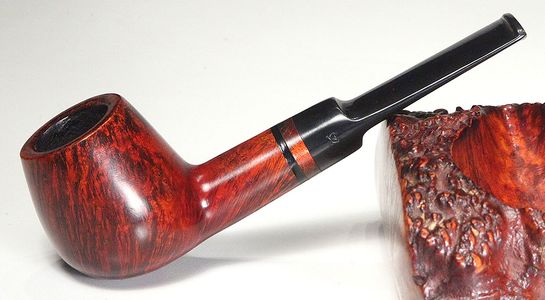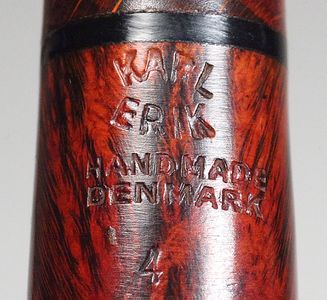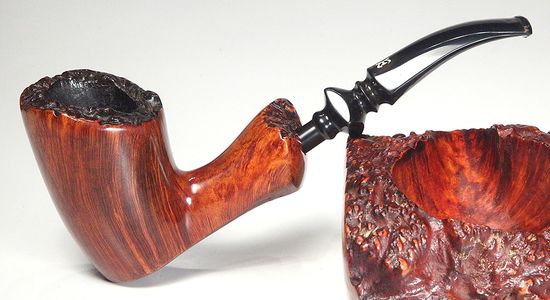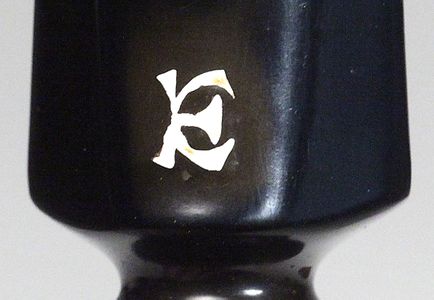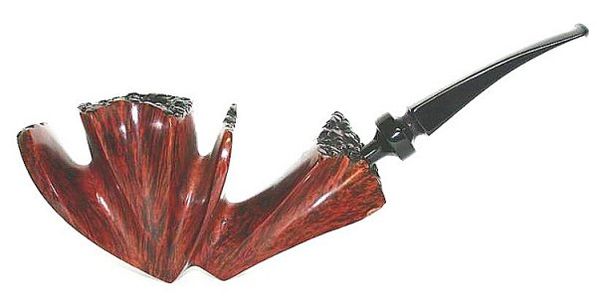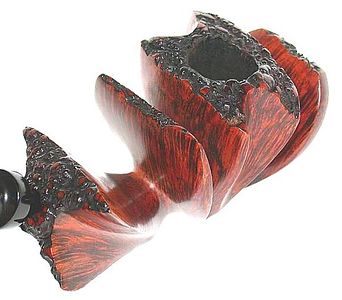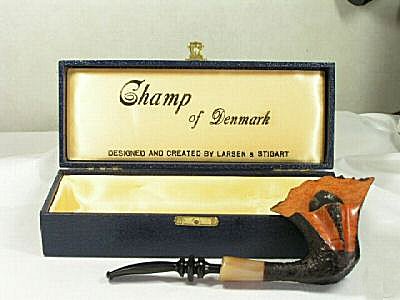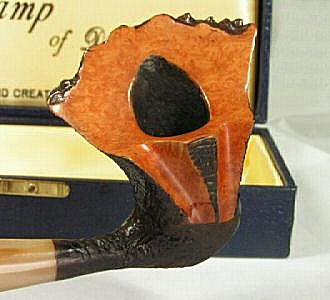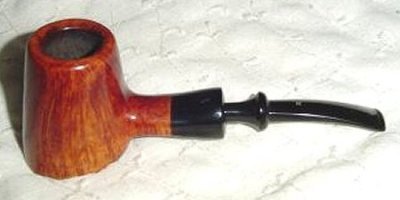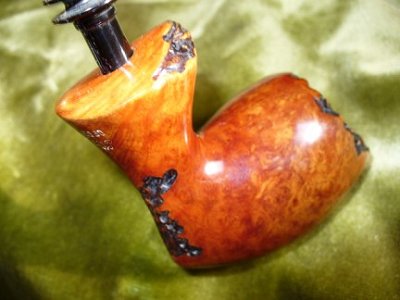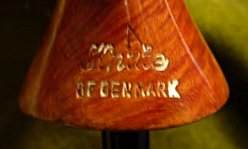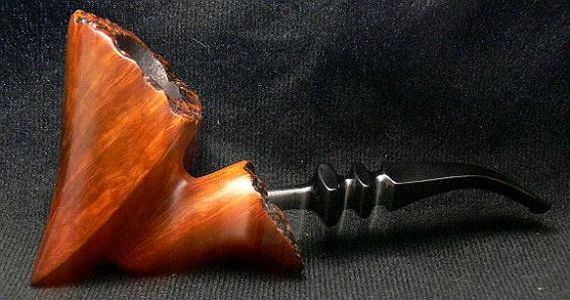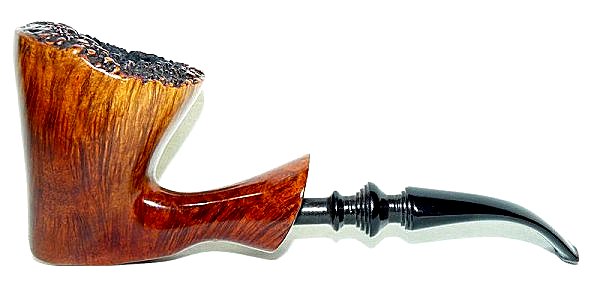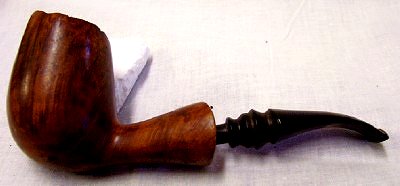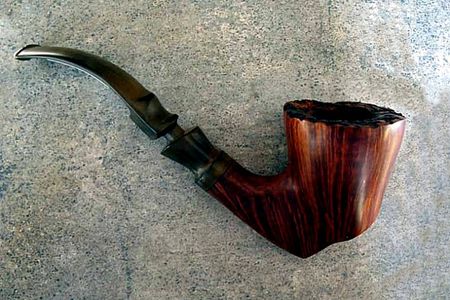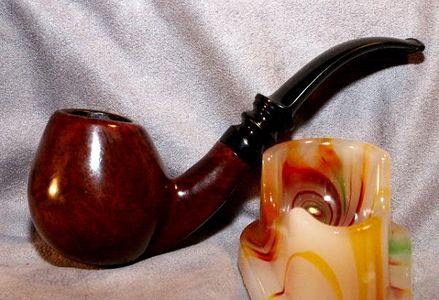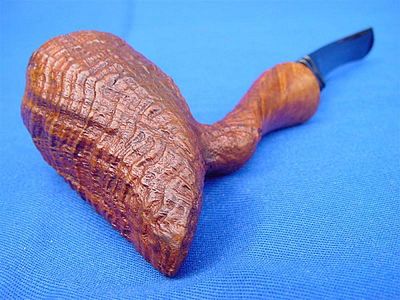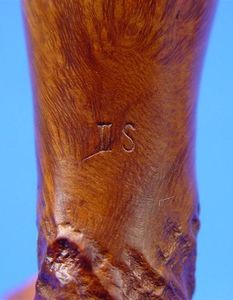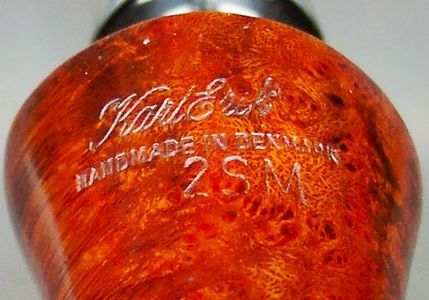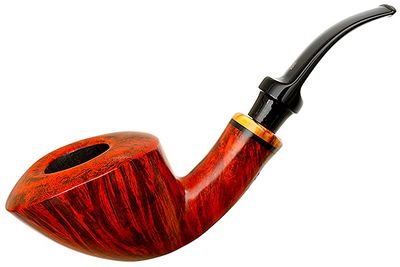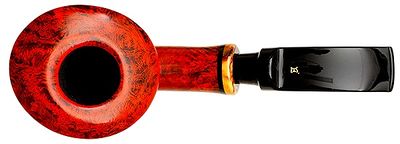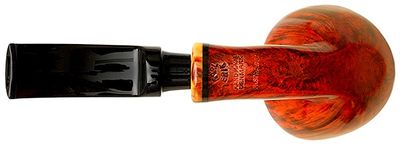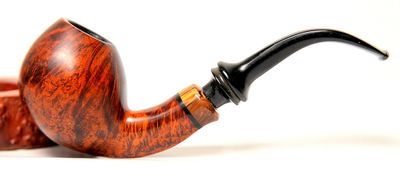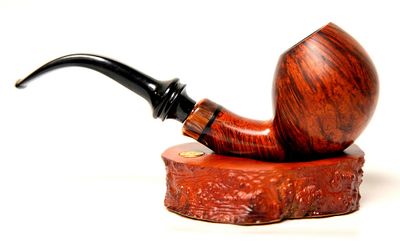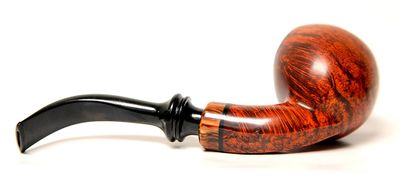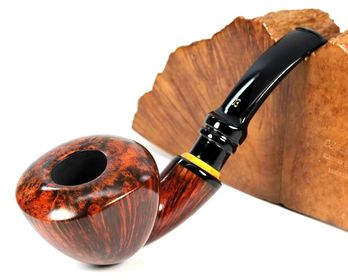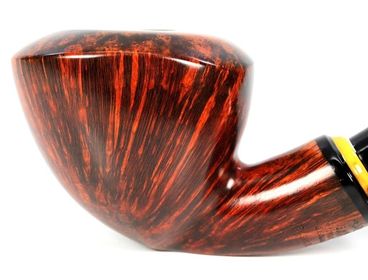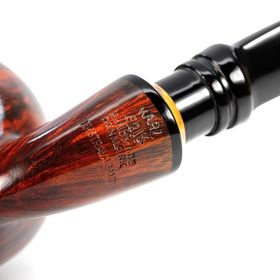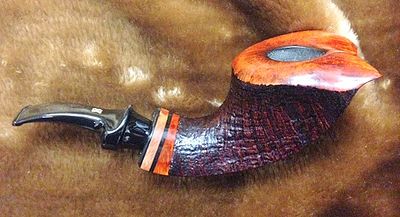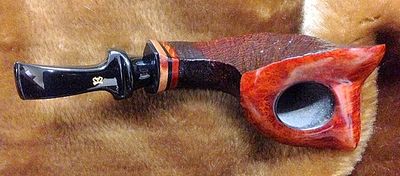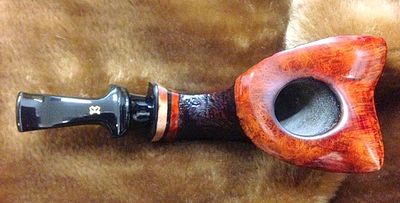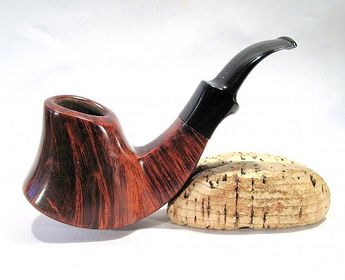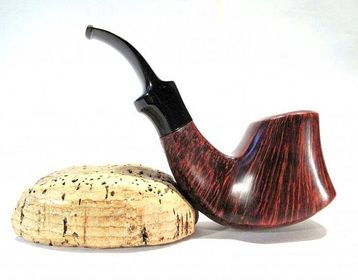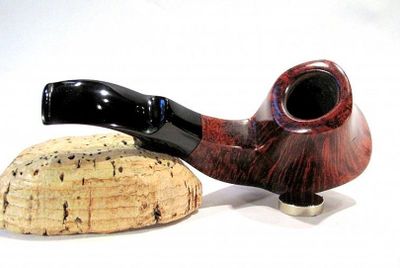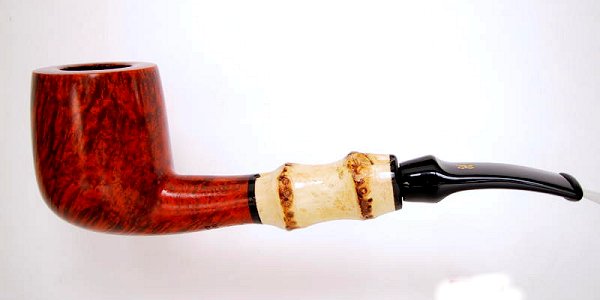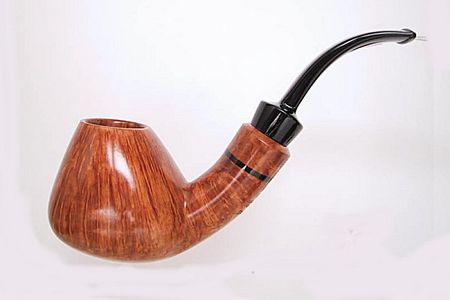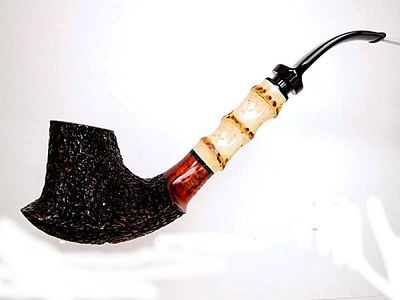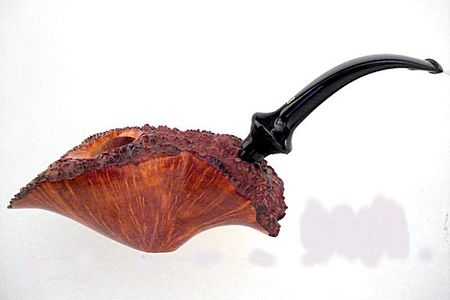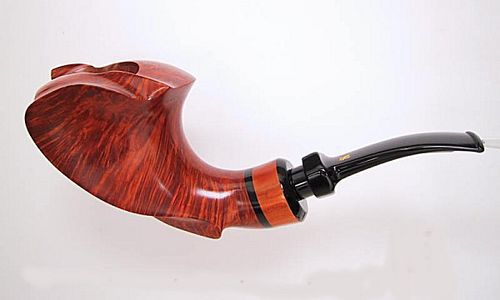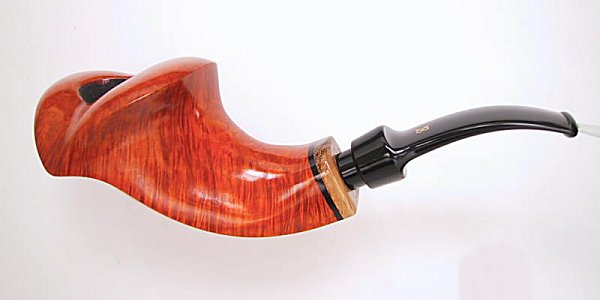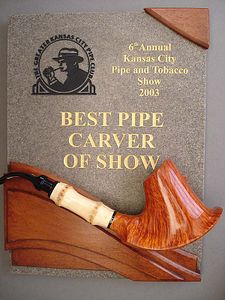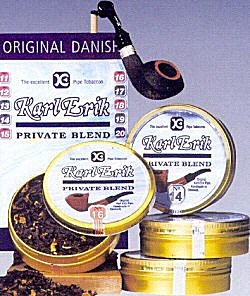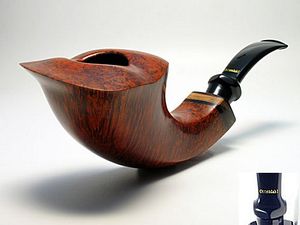Karl Erik
Karl Erik Ottendahl (1942 - 2004) was born in Aalborg (Jutland), just a few miles from the very northernmost tip of Denmark. He began smoking a pipe when he was 14 and upon leaving school he started an apprenticeship in the craft as a lithographer at the age of 16.
While working as an apprentice he began hand carving pipes as a hobby. Many were given as gifts to his more senior colleagues. Upon completion of his apprenticeship he moved to Nairobi, Kenya to work as a lithographer during the 1962 war. While in that war torn country, he was unable to procure pipes for himself. In the face of such a predicament, he chose to continue to make pipes for his own use rather than go without.
Returning to Denmark after three years he couldn't find a well paid occupation in his job, and so he began making a few pipes on the side to boost his income choosing his prenames "Karl Erik" - logo "KE" - for his label. When he managed to find some major Copenhagen pipe stores willing to sell his pieces his reputation grew little by little and he was finally able to purchase more and better machinery and began working full time as a pipe maker.
The Manufacture Era
Growing demand for his pipes made it necessary to look for a larger workshop and hiring first co-workers around 1967/68. A most important step ahead in his career was the contract with Wally Frank, Ltd. of NYC who were in search of attractive, well made but affordable Danish freehands and fancy pipes fitting to their vast offer of low end or midrange pieces but with a stress on quality.
"Attractive, well made but affordable Danish freehands and fancy pipes" - this was exactly what Karl Erik offered! So to say that's the kernel of his lifelong philosophy as a pipemaker! And indeed, Karl Erik always did it his way and always somewhat differently as others.
As one of the few notable Danes Karl Erik Ottendahl dedicated himself to the needs of the normal pipe smoker with a normal income. In the end he was one of the last of this tier. He never made any pretence of the fact that his "hand mades" were prefabricated to a large extent on automated machines and only the last steps of fine-shaping and finishing were carefully made by hand. But he never employed a copy milling, so many KE pipes may look very similar but not two are identic. As well the bulk of the stems was supplied by Stanwell in a close-to-finished state. Stanwell also did the the sand blasting for KE to a large extent.
All in all he was much more successful with this peculiar manner of fabrication than many of the low-output artisans who populate the pipemakers' Olympus but hardly know how to pay the electricity bill. Always keeping a watchful eye on quality his career developed fine and he was frequently making pipes for various labels in Denmark and the United States. While doing this he administered a manufacture employing up to fifteen craftsmen, each of them specialising in certain steps of the production. Namely Bent Nielsen and Peder Christian Jeppesen later became respectable pipemakers on their own.
Gallery
Brands Produced by Karl Erik Ottendahl (afak)
- Champ of Denmark[1]
- Dansk National (unconfirmed!)
- Dybsø (unconfirmed!)
- Garrick
- Jobey Dansk (for Weber Pipe Co.. The pipes were illustrated in the catalogs of the Tinder Box from 1970's - 80's.)[2]
- Knute (also known as "Knute of Denmark"; more a second with frequent rustications)
- Lars of Denmark (unconfirmed!)
- Larsen & Stigart (Copenhagen pipe shop)[1]
- Shelburne[1]
- Sven Egholm (a second brand)
- Wenhall (for Wenhall Pipes, New York)[3]
Gallery
Grading and the II S Problem
KE's old grading used numbers ascending from 4 to 1. The entirely hand made one of a kind pieces were stamped "Ekstravagant". Quite simple. But then there are the II S stamped pipes! (And furthermore seen so far II SM, I S, I M and I B.) Three fairy tales, often told:
- II S stands for the initials of a pipemaker who worked for Preben Holm before he changed to KE.
- II S pipes are a second brand of KE. Nonsense comparing the quality of II S and normal KE pipes!
- II S was used when there was no space for stampings otherwise.
But it is almost certain, that II S pipes were exclusively sold in the United States only.
KE discontinued all exports to the United States in 1987 due to waning sales and attempts of his business partners to screw down prices. Now, freehand sales were downward bound worldwide in those years and KE gradually grew tired running a pipe manufacture.
Back to the Roots
During all periods he had made some of his own handmade pipes, but he felt that the responsibility of managing the factory did not give him the freedom he wished he had. Accordingly, in 1990, he went back to work on his own. He believed that he could produce better work if he worked alone, though his principle reason was simply that he missed the quiet, pleasant atmosphere that a one man shop afforded him. According to him, he has been much happier since he returned to make pipes all by himself. Certainly, the results reflect his rediscovered happiness with the pipe making craft.
Though Karl Erik's favorite briar mostly came from Morocco or Greece, but he frequently purchased elsewhere, too. He didn't consider the briar origin to be particularly important provided the briar was well cured. Therefore, he simply purchased the best briar he could find, rather than purchasing from only one or two regions.
Concentrating on more classical influenced shapes Karl Erik's style emphasized the wood over all other contributing factors by allowing the grain to determine the ultimate shape of the piece. He further emphasized the natural, organic, flowing shape of his bowls with hand cut stems and a broad variety of decorating materials.
- A Sampling of Ekstravagants, Large Pipes Entirely Handmade by Karl Erik Ottendahl, Courtesy Dennis Dreyer Collection
Some still available @ FF-Pipes
New Grading
KE's new grading used numbers ascending from D to A. The unique "Ekstravagant" pipes C, B, A, AA to AAA. These superb pieces of remarkable quality were, almost certainly, the least expensive high- quality hand made pipes coming from Denmark today!
In the 90's he was honored by Stanwell to design some models for the very popular H.C. Anderson line which is named for the great Danish poet.
Around 1998/99 he traded the German rights to his brand name "Karl Erik" to Planta Tabak-Manufaktur, better known as the proprietor of Design Berlin (db). Thus - though db copied the style of the old Karl Eriks pretty closely - a recent KE offered for sale in Germany is unfortunately about as Danish as Eisbein mit Sauerkraut. But even though Planta did one thing of merit: a series of pipe tobaccos was named for Karl Erik!
Ottendahl?
While everywhere else a Karl Erik pipe remained a Karl Erik pipe made by Karl Erik himself, he began signing some of his pipes with his family name Ottendahl. The new label was strictly used to continue distributing his own pipes in Germany only! But as his Viking ancestors some Ottendahl pipes discovered a way to cross the pond and turned up in the United States. KE officially resumed sales to the USA after 13 years in 2000! This caused a certain confusion among US pipesmokers and some clever US pipetraders imputed the Ottendahls with a better quality than the usual Karl Erik pipes to take advantage of the favorable situation asking considerably higher prices for Ottendahl pipes.
During the following years KE produced a little more than 2000 pipes per year, selling the bulk of them in Germany and the US. That is surely a respectable output, considering the largely hand-made character of these pipes. Karl Erik Ottendahl was planning to make 2500 pipes in 2004 but he died surprisingly suffering a stroke in his home in Korsør on Zealand on the 12th of September 2004.
Epilogue
Tom Eltang obtained Karl Erik's old lathe, and a wage plan got new life..
For a long time he had been playing with the idea of making good sincere pipes at an affordable price. Tom invested in and established a small "factory setup" and designed the Sara Eltang Pipes named after Tom and Pia Eltang's youngest daughter.
References
- ↑ 1.0 1.1 1.2 It is almost impossible to draw a sharp line between some of these brands... Larsen & Stigart - once a famous Copenhagen pipe shop, now almost forgotten - offered pipes produced by KE stamped "Larsen & Stigart" as well as pipes stamped "Larsen & Stigart" + "Champ of Denmark" or "Larsen & Stigart" + "Shelburne". Almost needless to say, there are pipes stamped "Champ of Denmark" or "Shelburne" only. And the only reason is inconsistent stamping??? (BTW Larsen & Stigart employed own indoor carvers for appr. one decade - e.g. Søren Eric Andersen. They even managed to supply Dunhill with wild danish fancy pipes.)
- ↑ Jobey - obviously only as a ghost brand - was transferred to Saint-Claude, France to be manufactured by Butz-Choquin in 1987 - the very same year when Ottendahl discontinued all exports to the United States.
- ↑ Michael Kabik, who made freehands for Wenhall for a couple of years, reported that Wenhall Pipes folded shortly after moving from New York to Miami, Florida. Hence "Wenhall - Made in Danmark" might be a great rarity.
